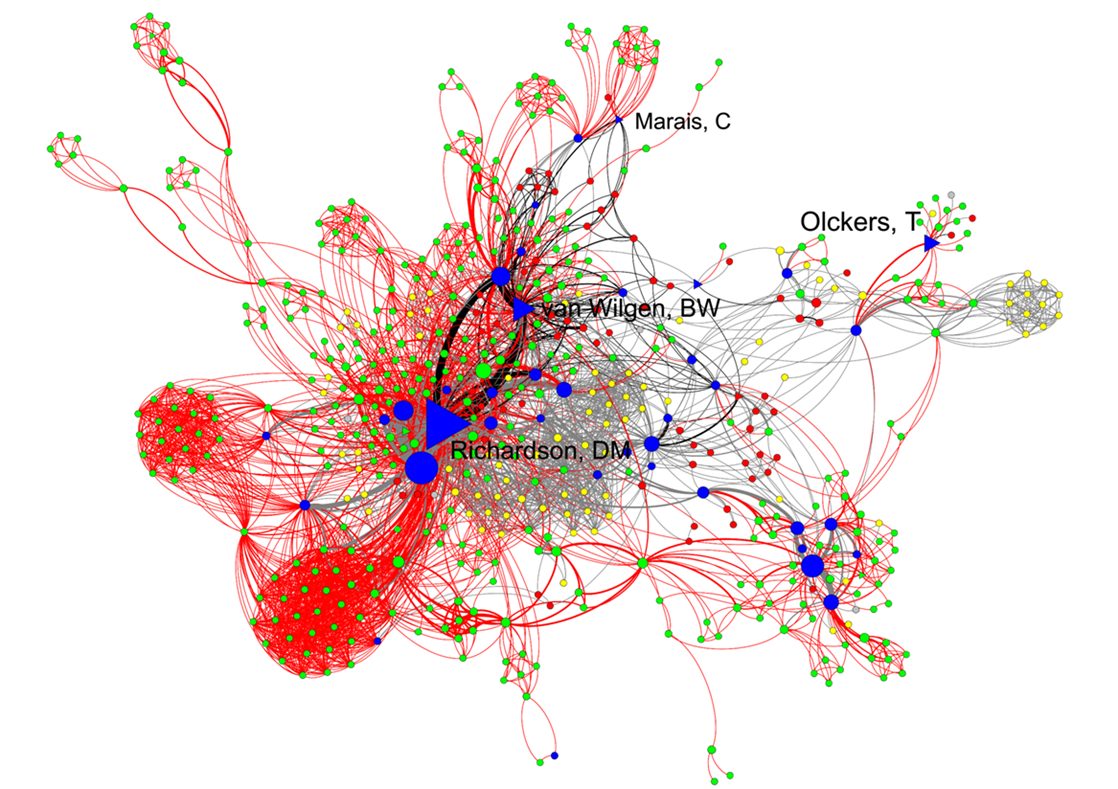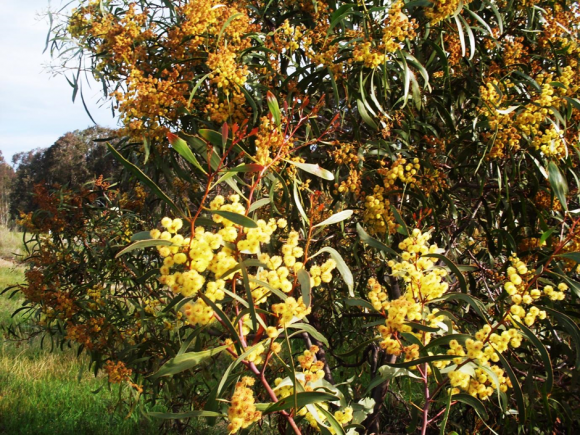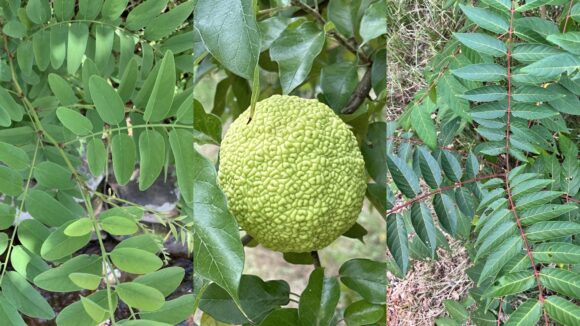19 March 2019 | By Brent Abrahams
Improving our understanding of the role researchers play in forming collaborative networks, can allow for more effective administration of the network to maximise research benefits. This includes the increased integration of knowledge across disciplinary boundaries, increased research productivity and innovation.
A study conducted by Brent Abrahams (C·I·B PhD student) and supervised by Prof Karen Esler (C·I·B Core Team Member) and Dr Nadia Sitas (Centre for Complex Systems in Transition) at Stellenbosch University, made use of social network analysis to identify and explore the roles of researchers in shaping collaboration networks and associated research outputs funded by the Working for Water Programme (WfW) since the 1990’s.
The study found that research co-funded by WfW is authored predominantly by a handful of core researchers. These core researchers are typically at the centre of a network or community and are highly connected – a result of their sustained research contributions, leadership and establishment in their fields. These core researchers typically benefitted from accumulative advantage – a phenomenon also known as the Matthew effect, where ‘the rich get richer’. They often possess status, privileged social and technical insights that are desirable to newcomers seeking access to this information and acquire recognition within their field. Core researchers therefore gain greater productivity and credibility in their field, by forging new and reinforcing older collaborations. How they use their advantageous position can impact both the advancement of research and the careers of newcomers to the field.

Core researchers can leverage social and other resources (such as financial, technical, equipment, and expertise) in a way that could either encourage or inhibit integrative research and innovation. Established researchers therefore play a role, not only in building a knowledge base, but also in facilitating the integration of new knowledge and new collaborators. The value of highly connected researchers in boundary spanning activities between disciplines and in linking subgroups of researchers in collaboration networks has been shown in several disciplines (including socio-ecological, natural resource management, research administration and organisational science). Such individuals can facilitate the integration of information across a large knowledge base. Through an in-depth knowledge of specific disciplines and understanding of where certain expertise is held within their network, these individuals can mobilise collaborative efforts to achieve various objectives.
However, invasion science, like even the purest of sciences, is a ‘social field’- with its own distribution of power, its monopolies, struggles, strategies, interests and profits. As such the scientific field is a locus for competitive struggle amongst researchers and institutions for scientific authority. This competitive struggle has the potential to drive innovation, but also stall it – should it come at the expense of sound science.
“If leading voices in invasion science and management are oblivious to the need for, or unwilling to participate in collaborative activities, they may knowingly or unknowingly stall any progress made in the discipline. This both in terms of research and capacity building,” explains Brent Abrahams.
Read the paper
Abrahams, B., Sitas, N. and Esler, K.J. 2019. Exploring the dynamics of research collaborations by mapping social networks in invasion science. Journal of Environmental Management, Volume 229: 27-37. https://doi.org/10.1016/j.jenvman.2018.06.051
For more information, contact Brent Abrahams at babrahams@sun.ac.za



